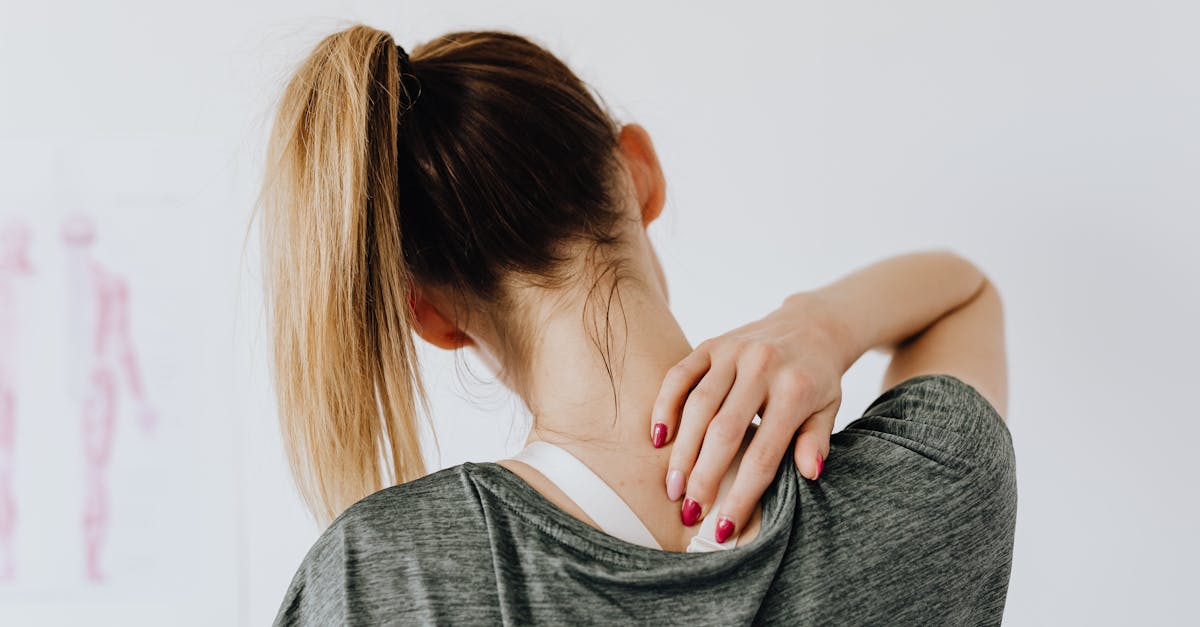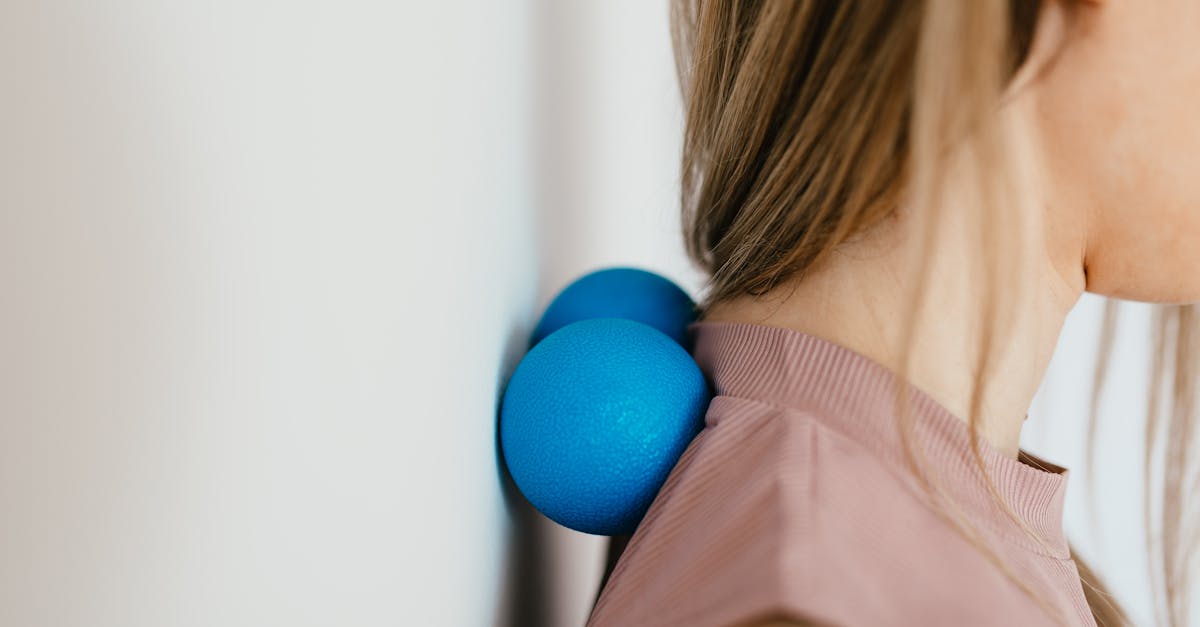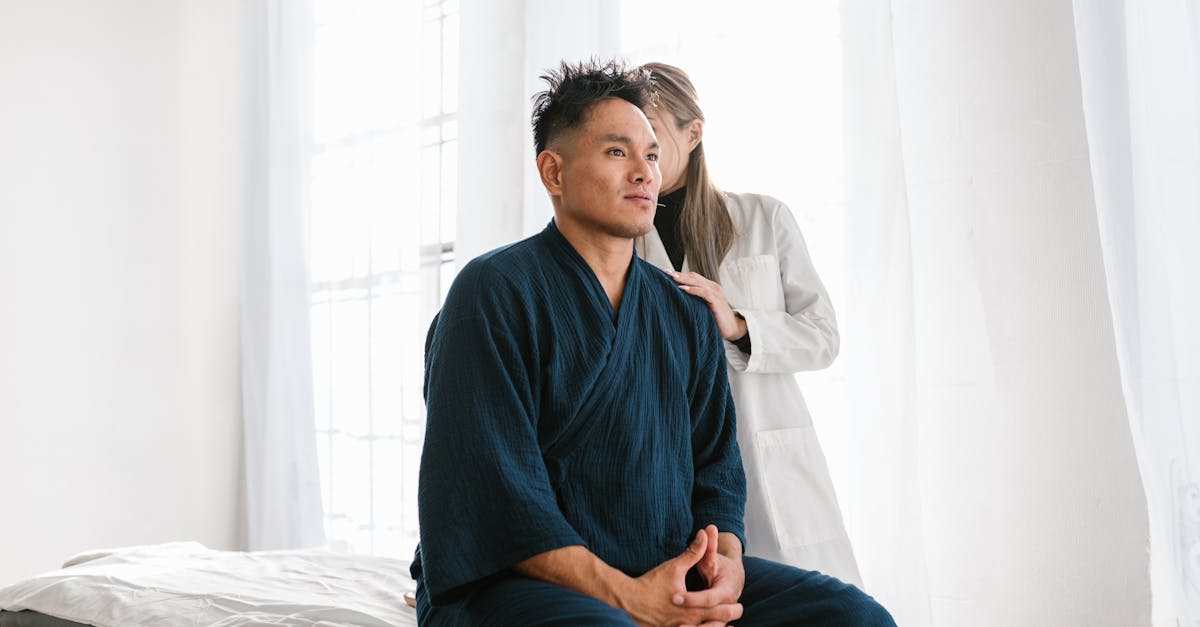In Short, understanding the reasons behind neck pains in winter is crucial for identifying effective relief strategies. Cold temperatures often lead to muscle constriction and reduced blood flow, exacerbating existing pains. The benefits of recognizing these causes include being able to manage discomfort through hydration, appropriate physical activity, and posture modifications. By addressing these factors, individuals can restore their comfort and regain their mobility during the colder months. |
Neck pain is often exacerbated during the winter months due to a combination of factors related to the cold weather. As temperatures drop, our bodies tend to react by experiencing increased muscle contraction, loss of heat, and reduced blood flow, which can lead to heightened feelings of tension and discomfort in the neck area. Additionally, winter illnesses like colds and flu contribute to neck pain, as bodily stress from these ailments can affect how we carry and move our necks. To manage winter-related neck pain, staying hydrated, maintaining good posture, and incorporating specific stretches can be beneficial.

Discover Pulse Align: A Path to Natural Balance and Enhanced Well-Being
At Pulse Align, we offer an innovative, non-invasive solution that gently assists in restoring your body’s natural balance and posture. Using gentle, imperceptible pulses, our approach supports the body’s intrinsic ability to align and recalibrate, promoting enhanced well-being without direct interventions. This method may lead to a decrease in muscle and joint tension, offering a refreshing sense of comfort and revitalization.
Embrace Natural Recalibration
Our philosophy at Pulse Align focuses not on discomfort or conditions directly, but rather on fostering the body’s self-correcting mechanisms. Through our gentle techniques, clients often experience improved posture and overall balance, which can naturally result in greater comfort. The alleviation of tension is not seen as a treatment but rather as a side effect of the body functioning more harmoniously.
A Personalized Approach to Wellness
Every individual’s journey to improved well-being is unique, and our clients have shared inspiring stories of their improvements in neck and back tension, postural balance, and overall vitality. At Pulse Align, we celebrate these experiences, highlighting how our gentle method fosters a family-friendly environment where everyone, including children and pregnant women, can embark on their wellness journey together. Our services are designed to complement your ongoing healthcare routine while enhancing self-care practices.
Join Us at Pulse Align
Explore the transformative experiences at Pulse Align by visiting our website to learn more and find a location near you, including clinics in La Prairie, Mont-Royal, Terrebonne, and many other cities. We invite you to book a consultation for yourself or your family—embracing our safe, non-invasive, and family-friendly approach today. Remember, Pulse Align serves as a supportive ally in your quest for enhanced wellness while respecting the necessity of ongoing supervision from your healthcare team.
Medical Disclaimer
The information and advice provided on this site do not replace the advice, diagnosis, or treatment of a healthcare professional. Please note that the author of this article is neither a doctor nor a specialist in a medical specialty as defined by the Collège des médecins du Québec. Manual medicine, functional medicine, and sports medicine as described on this site exclude any medical treatment or diagnosis made by a doctor or medical specialist. Always consult your doctor for any medical questions. For more details, please read our complete Legal Notice.
- Cold Temperatures: Lead to muscle constriction and heightened tension.
- Winter Sports: Increased physical activity can strain neck muscles.
- Dehydration: Lack of fluid intake during winter can cause stiffness.
- Posture: Poor posture from bundling up can exacerbate neck pain.
- Inactivity: Reduced movement leads to decreased muscle flexibility.
- Illness: Cold and flu can cause significant neck discomfort.
- Cold Air Exposure: Direct drafts can trigger neck spasms.

Understanding Winter Neck Pain
During the winter months, many individuals notice an increase in neck pain and discomfort. This phenomenon can be attributed to several factors that come into play when temperatures drop. Cold weather can cause muscle constriction, decreased movement, and even dehydration, all of which exacerbate pre-existing issues in the neck area. By exploring the various causes and offering practical tips, we aim to help you manage and minimize neck pain during the colder season.
Causes of Neck Pain in Cold Weather
Muscle Contraction and Tension
As temperatures plummet, your body’s natural response is to contract muscles to preserve heat. This involuntary reaction can lead to increased tension around the neck and shoulder regions. Prolonged periods of muscle tension often result in pain, discomfort, and stiffness, particularly for those already predisposed to neck problems.
Reduced Mobility
The cold often makes outdoor activities less appealing, leading to a decrease in physical activity. When we remain sedentary for long periods, joint stiffness and muscle tightness can become more prevalent. This lack of movement can further contribute to the intensity of neck pain, making it essential to incorporate stretching and mobility exercises into your daily routine.
Dehydration
Interestingly, many people tend to drink less water during the winter months, often forgetting about hydration altogether. Dehydration is a common culprit behind muscle stiffness and pain. Ensuring proper hydration not only supports overall health but also helps in preventing neck discomfort.
What to Do About Neck Pain in Winter
Stay Active
Even when the weather is less than inviting, maintaining some form of physical activity is crucial. Incorporating simple exercises like neck stretches and light resistance training can improve flexibility and strength. This proactive approach reduces the likelihood of neck pain by promoting better muscle health and resilience.
Practice Good Posture
Suboptimal posture, especially during extended periods of sitting indoors, can aggravate neck pain. Being mindful of your posture while working or relaxing can play a significant role in relieving discomfort. Utilize ergonomic furniture, take regular breaks, and ensure that you maintain an aligned posture to support your neck’s health effectively.
Utilize Heat Therapy
Applying heat to the neck can be a soothing remedy for cold-induced discomfort. Warm compresses can help relax tight muscles and improve blood flow to the affected area. This method can alleviate tension and provide welcome relief, especially after long periods of cold exposure.
Embracing a Holistic Approach
As winter sets in, understanding the multifaceted reasons behind increased neck pain can empower individuals to take action. An awareness of how external conditions affect our bodies promotes a proactive stance against discomfort. By adopting practices consistent with the principles of Pulse Align, such as focusing on neuromuscular health, achieving symmetry, and recalibrating the nervous system, individuals can foster an environment for recovery. Embrace your journey to better health, recognizing that attention to hydration, mobility, and posture can make all the difference in navigating winter’s challenges.
| Causes | Impact on Neck Pain |
| Cold weather | Causes muscle constriction and tension. |
| Increased illness | Higher incidence of colds leading to neck stiffness. |
| Reduced movement | Leads to joint stiffness and decreased muscle flexibility. |
| Dehydration | Contributes to stiffness and exacerbates existing pain. |
| Posture problems | Worsened by indoor activities and bad ergonomics. |
| Winter sports | Increased stress on neck muscles can lead to soreness. |
| Cold air exposure | Can trigger muscle spasms such as torticollis. |
| Sleep issues | Awakening with neck pain due to cold drafts. |

Transformative Wellness Journey: Clients Discover Relief from Neck Pains in Winter
At Pulse Align, we understand that necks pains can disrupt your daily life, especially during the winter months. Clients from various regions, including La Prairie and Mont-Royal, have shared heartwarming testimonials about their experiences with our holistic approach. Many have reported a natural easing of discomfort, attributing their improvements to our commitment to supporting the body’s natural ability to recalibrate and restore balance.
One client from Terrebonne expressed, “Since starting my journey with Pulse Align, I’ve felt a remarkable shift in how my body responds to winter’s chill. The stiffness I used to feel in my neck seems much more manageable now. It’s as if my body has learned how to adapt to the cold with more resilience.” This sentiment resonates with many who found our unique methods beneficial in combating the exacerbation of neck pain during winter months.
In the picturesque town of Saint-Jérôme, another client shared, “I used to dread winter, knowing that my neck pain would flare up. But with the guidance from Pulse Align, I’ve learned effective techniques to maintain my body’s flexibility. It’s a delightful relief to feel so much better and to regain control over my health!”
The feedback from clients in Châteauguay emphasizes the importance of maintaining hydration and mobility during colder seasons. “The advice I received about keeping hydrated and moving regularly has been a game changer for my well-being. I never realized how much my neck pain was linked to these factors,” noted one satisfied client.
Across Chicoutimi and beyond, clients have been thrilled to discover how Pulse Align’s services work in tandem with healthcare professionals to create an integrative support system. Many families in these regions are finding that our approach not only alleviates symptoms but also nurtures an overall improvement in wellness.
Whether you’re based in Dues-Montagnes, Sainte-Marie, or even as far as Panama City, you’ll find that our clinic locations offer the resources necessary to support your health journey effectively. Our dedication to patient education and empowerment fosters an environment where clients can comfortably address their concerns regarding neck pain.
Explore the path to wellness and see how our techniques will help you, just like many others who have experienced significant improvements. To learn more about our services and find a clinic near you, visit Our Clinics. At Pulse Align, we are committed to guiding you and your family on your wellness journey, ensuring every step is aimed at restoring balance and harmony to your body.
During the colder months, many individuals experience an increase in neck pain, a discomfort that can significantly impact daily life. This seasonal fluctuation in pain levels can be attributed to multiple factors, all of which intertwine to create the perfect storm for exacerbating conditions related to the neck.
First and foremost, the cold weather tends to cause muscle constriction, which is a natural response of the body to preserve heat. When temperatures drop, the muscles surrounding the neck may stiffen as a protective mechanism. This involuntary tightening can lead to increased tension, resulting in discomfort and pain. Moreover, the reduced blood flow that accompanies colder temperatures further exacerbates these symptoms, depriving the neck area of essential nutrients and oxygen required for optimal functionality.
Additionally, winter often brings about a rise in illnesses such as the common cold and the flu. Sickness may lead to an increase in neck pain as it commonly comes with muscle aches or stress due to the body’s fight against infection. This general malaise, compounded with poor posture commonly adopted during times of illness (such as lying down for prolonged periods), contributes to the discomfort experienced. Understanding these connections highlights the multifaceted nature of neck pain during the winter months.
Another vital aspect affecting neck pain in winter relates to the increased likelihood of poor posture. With the colder weather, individuals tend to hunch or adopt awkward positions to stay warm. This position may become habitual, increasing the strain on the neck over time. Poor posture often leads to adjustments in the body’s alignment, which can contribute to chronic pain issues if not addressed early on. Acknowledging this link between winter habits and neck pain is crucial for effective prevention strategies.
It is also noteworthy to consider the impact of dehydration in winter. As people often forget to drink sufficient water when temperatures drop, the resulting dehydration can further lead to stiffness and discomfort in the neck. The body’s ability to lubricate joints and maintain muscle elasticity suffers when hydration levels fall, making neck pain more prevalent during this season. Maintaining proper hydration is thus a critical yet often overlooked recommendation for preventing winter-related neck pain.
Lastly, it is essential to be aware of the potential influence that winter sports have on neck health. Increased activity levels and movements in these sports can place additional stress on the neck and shoulders, leading to soreness and potential injury. Factors such as falls or sudden jerking movements can result in strains and may contribute to long-term pain if the associated risks are not managed effectively.
In light of these factors, addressing neck pain during the winter months requires a proactive approach. This can include practicing good posture, staying hydrated, monitoring activity levels in winter sports, and being aware of illnesses that increase body tension. By recognizing these connections, individuals can better navigate the challenges posed by winter and move towards solutions that foster health and well-being.
Neurovertebral Decompression Technology by TAGMED
Mechanism of Action
The neurovertebral decompression technology offered by TAGMED works by applying a controlled and progressive traction force to the spine. This innovative approach effectively increases the space between the vertebrae, thereby alleviating pressure on the intervertebral discs and nerve roots. As a result, the method fosters improved circulation of fluids within the targeted area, which can significantly contribute to reducing inflammation and relieving pain. This mechanism plays a vital role in addressing the common issues that arise during colder months when neck pains tend to worsen due to increased muscle constriction and decreased blood flow.
Specific Benefits
One of the standout features of this non-invasive method is its capability to effectively relieve chronic pain and symptoms associated with conditions such as herniated discs, disc bulges, and moderate to severe spinal stenosis. By reducing the pressure exerted on nerve structures and optimizing the flow of fluids around the discs, TAGMED’s decompression therapy promotes a quicker recovery. Patients often report a significant improvement in their quality of life, with decreased pain levels allowing them to engage more freely in daily activities, particularly during the winter when issues like neck stiffness and discomfort are prevalent.
Comparison with Other Treatments
When comparing TAGMED’s neurovertebral decompression technology with other common therapeutic approaches used to manage conditions described in discussions on winter neck pains, several advantages emerge. Traditional treatments such as pain medications, corticosteroid injections, surgery, or conventional physical therapy often involve invasive procedures or come with potential side effects. In contrast, TAGMED’s technique is uniquely non-invasive and minimizes the risks associated with pharmacological treatments. Furthermore, many patients experience a quicker recovery time, enhancing their overall treatment experience and outcomes.
Case Studies or Testimonials
Numerous patients have shared their positive experiences following neurovertebral decompression therapy at TAGMED. One patient, who dealt with persistent neck discomfort and headaches, reported a considerable and lasting reduction in pain levels after just a few sessions. Another testimonial highlights how a patient was able to significantly decrease their reliance on pain medications post-treatment, enabling them to return to their daily routines much sooner than anticipated. Such real-life improvements underscore the efficacy of this approach in treating chronic pain and related symptoms, particularly during the challenging winter months.
As temperatures drop, many individuals experience an increase in neck pain, a phenomenon not to be overlooked. One key element is the muscle constriction that occurs in response to cold air. Our bodies instinctively tighten muscles in an attempt to maintain warmth, which can lead to tightness and discomfort in the neck area. This condition, often exacerbated by winter activities or insufficient movement, becomes a significant concern during these colder months.
The winter season is also synonymous with higher rates of colds and flu, which can further complicate neck pain issues. Illness can lead to a more sedentary lifestyle, contributing to muscle stiffness and discomfort. In addition, cold weather can induce spasms known as torticollis, where sudden tightness forces the neck into an unusual angle, compounding existing pain issues.
Another contributing factor is hydration. The winter air tends to be drier, leading to decreased fluid intake. Dehydration significantly impacts joint health, making muscles and joints less flexible and more prone to discomfort. Moreover, poor sleeping conditions, often exacerbated during winter months, can lead to awkward sleeping positions, resulting in morning stiffness and neck pain upon awakening.
Lastly, postural issues related to increased time spent indoors can be problematic. Prolonged sitting or improper alignment while using devices can strain the neck and shoulders, leading to chronic discomfort. In summary, a combination of environmental, physical, and lifestyle factors contributes to the prevalence of neck pain during the winter, making it crucial to recognize these challenges and seek effective preventative strategies.

Do you suffer from a chronic condition that responds little or not at all to conservative treatments?
As winter rolls around, many individuals may find themselves dealing with unusual discomfort and tension in the neck and upper back. At Pulse Align, our innovative, non-invasive method utilizes gentle, imperceptible pulses designed to support the body’s natural recalibration process. By targeting muscle tone symmetry and improving posture, we help restore balance and alleviate the everyday tension that often arises during the colder months.
It’s important to note that Pulse Align does not focus on eliminating discomfort directly. Instead, our holistic approach empowers the body to recalibrate itself, leading to remarkable improvements in comfort and posture over time. We aim to enhance your overall well-being by addressing the root causes of muscle tension and imbalance, enabling you to enjoy a more active and fulfilling lifestyle. Our services work seamlessly alongside existing health care routines, enhancing your journey toward wellness.
Our personalized approach is at the heart of what we do at Pulse Align. We take pride in gathering insights from our clients, who frequently share experiences of notable advancements in their quality of life. Reports of increased comfort, enhanced posture, and a general sense of well-being underscore the positive outcomes felt by families who have integrated our services into their lives. Our offerings are suitable for everyone—children, pregnant women, and those looking to improve their daily comfort.
We invite you to explore more about how Pulse Align can benefit you and your loved ones. Visit our website to discover our services, find nearby locations such as La Prairie, Mont-Royal, Terrebonne, and book a consultation. Our friendly team is dedicated to ensuring your experience with us complements your wellness journey, providing state-of-the-art support that fits every family member’s needs. Rest assured, our services may be safely integrated with all aspects of your natural or medical health care.
To learn more about our services and book an appointment, visit our website: Pulse Align
Medical Disclaimer
The information and advice provided on this site do not replace the advice, diagnosis, or treatment of a healthcare professional. Please note that the author of this article is neither a doctor nor a specialist in a medical specialty as defined by the Collège des médecins du Québec. Manual medicine, functional medicine, and sports medicine as described on this site exclude any medical treatment or diagnosis made by a doctor or medical specialist. Always consult your doctor for any medical questions. For more details, please read our complete Legal Notice.
Frequently Asked Questions
Neck Pain
Does core strengthening help?
A strong core improves overall posture, reducing strain on the neck.
Is applying warming creams useful?
Yes, warming creams can locally relax muscles and reduce pain.
Is swimming helpful?
Yes, swimming improves posture, strengthens back muscles, and can relieve cervical tension.
Do ergonomic pillows help?
Yes, a suitable pillow supports the neck’s natural curve, reducing tension and neck pain.
Is osteopathy effective?
Many find relief through osteopathy, which aims to restore musculoskeletal balance.
Is cervical osteoarthritis common?
Yes, it’s common with age. Cartilage in the cervical joints wears down, causing pain and stiffness.
Does holding my phone cause neck pain?
Yes, holding a phone with your head tilted down for extended periods can cause neck strain.
Should I avoid thick pillows?
Yes, a pillow that’s too thick or too thin alters neck alignment, potentially causing or worsening pain.
What is cervical pain?
It’s pain localized in the neck area, which can radiate to the head, shoulders, or upper back.How can I quickly relieve neck pain?
Gentle stretches, applying heat, light massages, improving posture, and relaxation exercises can provide temporary relief.
David Lambert understands that neck pain is far more than a physical ache—it’s a roadblock to living the life you love. As a Neck Pain Awareness Advocate at Pulse Align, he is committed to shedding light on the underlying causes, sharing practical relief strategies, and offering genuine support to readers seeking to reclaim their freedom of movement. With a warm, empathetic voice and a keen eye for the latest in pain management research, David leads conversations that uplift, educate, and inspire. He believes that every individual deserves to feel heard, understood, and guided toward healing, one step at a time.
Medical Disclaimer
The information and advice provided on this site do not replace the advice, diagnosis, or treatment of a healthcare professional. Please note that the author of this article is neither a doctor nor a specialist in a medical specialty as defined by the Collège des médecins du Québec. Manual medicine, functional medicine, and sports medicine as described on this site exclude any medical treatment or diagnosis made by a doctor or medical specialist. Always consult your doctor for any medical questions. For more details, please read our complete Legal Notice.




